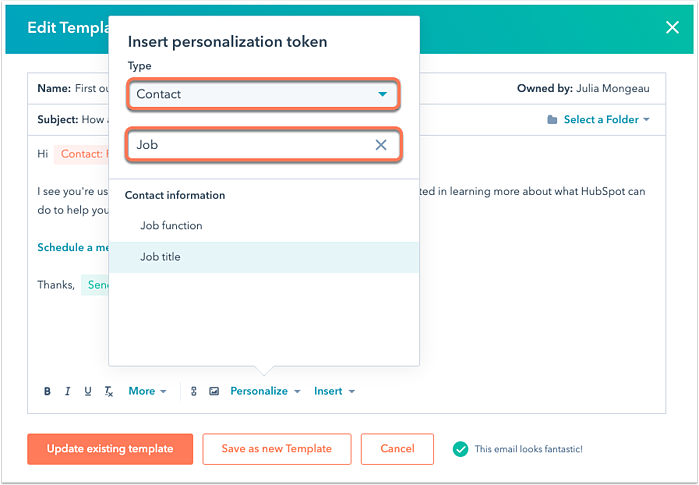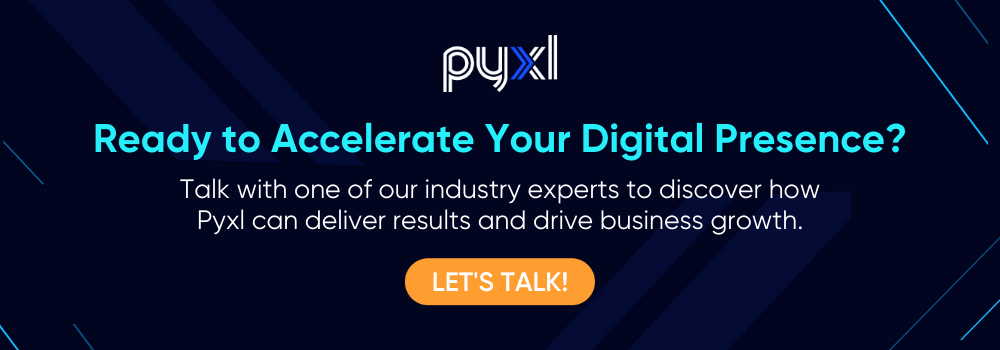Using Personalization Automation to Create a Targeted Experience
Creating a personal connection with your brand is a positive experience your customers seek. Building relationships with customers strengthens customer loyalty and directly impacts revenue as 76% of consumers will buy from you over your competitors, and 57% will spend more if they feel personally connected to your business.
Personalization plays a vital role in connecting your company with customers—a total of 94% of customer insights and marketing professionals agreed that personalization is essential for achieving their current marketing objectives. Your organization ought to treat customers like they’re more than just numbers or names in a database. In almost three out of four cases, consumers only respond to marketing messages that meet their needs and motivations. It is possible to use various personalization automation tactics in your digital marketing efforts, such as email personalization tokens, smart content, and smart forms, to deliver a consistent, relevant, and personalized experience to all your contacts.
This blog will cover the ins, and outs of personalization automation, the benefits it provides, and some personalization features to include in your strategy.
The personalization and automated partnership
Automation, by its very nature, can seem very impersonal, cited as a concern by 61% of marketers. However, with automated marketing campaigns, entrepreneurs have much more time to focus on the prospects that are interested in your business.
With personalization, you can tailor brand messages for specific prospects based on the details and information collected through automation. Analyzing and utilizing your customer data will allow you to better understand your prospects and customers for a more tailored experience. You can use that data to send targeted messages that help users move down the funnel. This is the most effective way to create processes that nurture and automate your strategy.
Benefits of personalization
You can use personalization throughout the buyer’s journey to encourage prospective customers to take action by creating an experience that’s specific to them and their needs. There is a variety of different benefits that increase this connection, including:
Better converting call-to-actions
A call-to-action (CTA) is a great way to move things along in the buying process, but its value extends beyond simply initiating a final conversion. A good CTA can also encourage someone to read a blog post, take a survey, start a free trial, or watch a demo. Regardless of what kind of CTA you implement, you will want to personalize it for each of your users depending on where they are within the buyer’s journey (awareness, consideration, decision).
Research shows that personalized CTAs perform 202% better than their generic counterparts. For instance, if someone visits your site already on your mailing list and is deemed a highly qualified lead within your CRM, you can display the right call to action within the automated emails they receive depending on where they are within the buyer’s journey. In this case, you’d be better off encouraging them to take a different action, such as trying a product demo.
More relevant product recommendations
Providing accurate product recommendations is also essential to returning customers, especially in eCommerce. To keep your customers interested and coming back for more, you must give them something new and different instead of supplying the exact product they already own or have shown previous interest in. To ensure that your product recommendations are always fresh and relevant, you can use predictive analytics. This automation tool uses the data you’ve collected in previous purchases and interactions to predict future recommendations. Doing so will boost customer loyalty because you are continuing to send personalized products you know they will like.
High converting landing pages
There are certain touchpoints of the user experience, such as landing pages, that are just screaming for personalization. To better appeal to audiences, these landing pages display different features. Businesses in the eCommerce and SaaS industries should pay special attention to landing pages because an adequately optimized one can impact revenue dramatically.
Improved customer loyalty
A recent survey revealed that 79% of consumers only care about brands that care about them. When you use every tool at your disposal to make the user experience warm, welcoming, and individualized, you can boost customer loyalty. Personalization is especially crucial if you are running a loyalty program, as only 25% of customers are satisfied with the amount of personalization they receive in their loyalty programs. When you show people you understand them and provide products and services that solve their challenges, you will see a higher long-term value.
A better understanding of your customers
Using personalization automation, you can quickly and efficiently sort customers into a segmented campaign. Based on previous interactions with your business (downloading a resource, filling out a form, viewing a webpage), you can compile information on each contact’s industry, the size of their company, and other essential details that would help with the conversion process. You can design different versions of your website based on the information entered by your audience.
Increased time on site
When you show someone content that’s relevant to them, they are more likely to interact with your website longer. Search algorithms reward businesses with low bounce rates because it’s proof that your website provides the experience your users expect to see when coming to your site! Your goal is to give people a reason to explore your site and interact with your product.
Personalization features to use
Predictive analytics with product recommendations
Predictive analytics provides insight based on algorithms and models that analyze past consumer behavior and predict future behavior. Customers benefit from this behavior as it seamlessly personalizes their experience. Automating your marketing can result in a great customer experience for users. You are saving them time by identifying items they will likely like and because you are directly sending them goods they will probably buy. Amazon’s recommendations demonstrate this since they present similar products based on the items your consumers are interested in or have purchased previously.

Smart Content
90% of the consumers in the US prefer personalized marketing messages. Smart content and personalization tokens enable marketers to display several different messages or CTAs that target different audiences in emails, landing pages, web pages, etc. By developing just one deliverable that automatically adjusts content based on criteria specified, a team can save time compared to creating separate assets for each segment of users. Moreover, you can also see AI’s power to increase conversions in delivering customized content. Users can move down the sales funnel by providing relevant and helpful content that addresses their unique goals, needs, and questions about the industry.

Smart Forms
Companies use smart forms to collect more information on their potential customers to segment and target them further. Your form fields can change in real-time based on the information entered by a user, helping you gather better data or prevent irrelevant information from being entered. The dynamic feature of the form could, for instance, remove or display a field asking if you’d like to see a demo if a customer identifies themselves as a current customer.

Partner with Pyxl
Personalization provides companies with the ideal connection to their customers, especially with automation tools to help customize messages for all your contacts. With so many automation uses and tools, it can be challenging to know where to begin or integrate within your current business processes. Contact our digital experts at Pyxl to discover how to incorporate tactics like personalization automation into your digital strategy.
Updated: Apr 13, 2023
 Bonnie Winter
Bonnie Winter
 Kati Terzinski
Kati Terzinski Erin Murray
Erin Murray